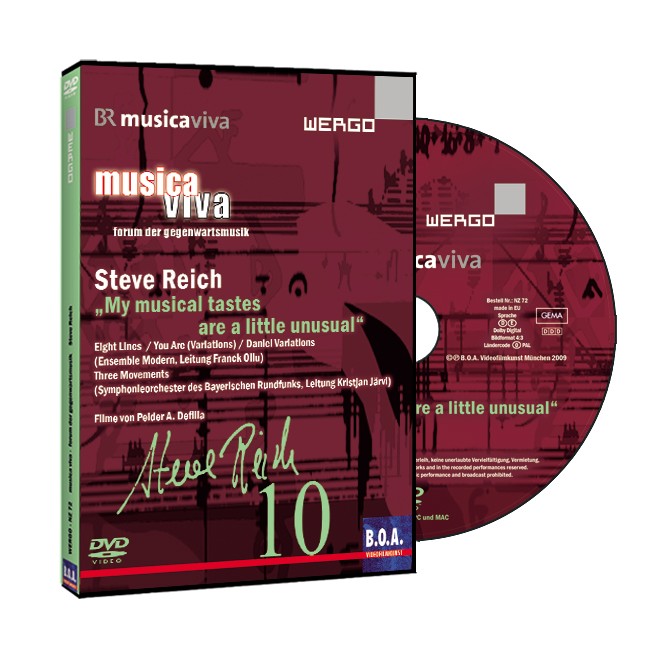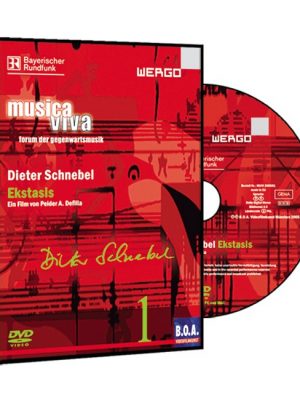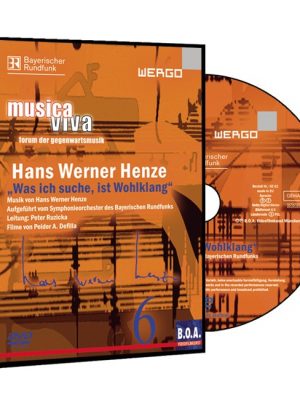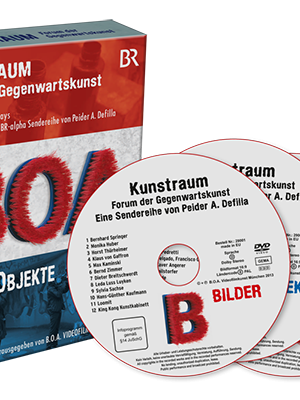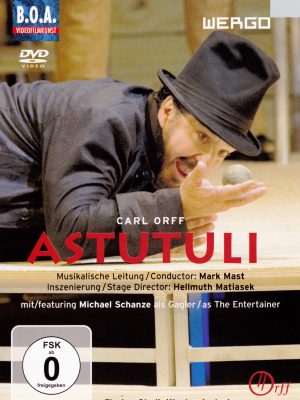Musica Viva DVD 10
€14,95
Musica Viva DVD 10
Three Movements for orchestra
Steve Reich symbolizes the strictness of the rhythm in the Three Movements by instructing the percussion instruments to be placed directly in front of the conductor.
Description
Three Movements for orchestra
Steve Reich symbolizes the strictness of the rhythm in the Three Movements by instructing the percussion instruments to be placed directly in front of the conductor. “These instruments play constantly and provide the rhythm of the piece. If they were placed in their usual position at the back of the orchestra, there would be a time delay between the conductor’s instructions and what the musicians in the orchestra hear. If they stand directly in front of the conductor, the whole orchestra can see and hear the unified rhythm at the same time.” For a similar reason, Steve Reich gives the instruction to place the strings, compositionally divided into two groups, to the right and left of the percussion instruments. “The purpose of the placement here is to make the counterpoint between the two string orchestras clearer. The listener can distinguish the two groups more clearly.” The precision with which Steve Reich prescribes the placement of the orchestra is based on the compositional characteristics of the music. As already mentioned, it is based on a consistently continuous rhythm, which is dictated by the marimba and piano almost like a metronome. Even the tempo ratios are precisely defined: The middle movement of the Three Movements is to be performed exactly half as fast as the two outer movements.
The three movements are played through without a break. However, they are clearly distinguished from one another, firstly by the changing tempo and secondly by their character. In the first movement, Steve Reich composes a slow harmonic sequence that unfolds between the winds and the two string groups. Each chord change is accompanied by a change in the orchestral groups. The spatial separation of the groups on stage creates the impression of overflowing blocks of sound, an effect that the composer associates with an image: “This slow change from chord to chord perhaps creates the impression of different incidences of light as clouds slowly drift across the sky. In musical terms, this change is reminiscent of the middle piece Farben or of summer mornings by a lake in Schönberg’s Fünf Orchesterstücke. Later in the first movement, the pulse is grouped into repeated, interlocking rhythmic patterns, while the wind instruments provide sustained support.”
The second movement is based on Steve Reich’s Sextet (1985) and is more or less an orchestration of its melodic structures. They appear contrapuntally intertwined. In the third movement, the composer also uses an idea that already appears in the Sextet and New York Counterpoint, both from 1985, the contouring of the music by shifting accents. Steve Reich writes: “After the upper voices of the orchestra have built up a two-part canon structure, the lower voices begin to accentuate this material so that it is first perceived as three groups of four bars each and then as four groups of three bars each. This kind of rhythmic ambiguity has been a hallmark of my music for more than twenty years now, but it is also very common in West African music.”
